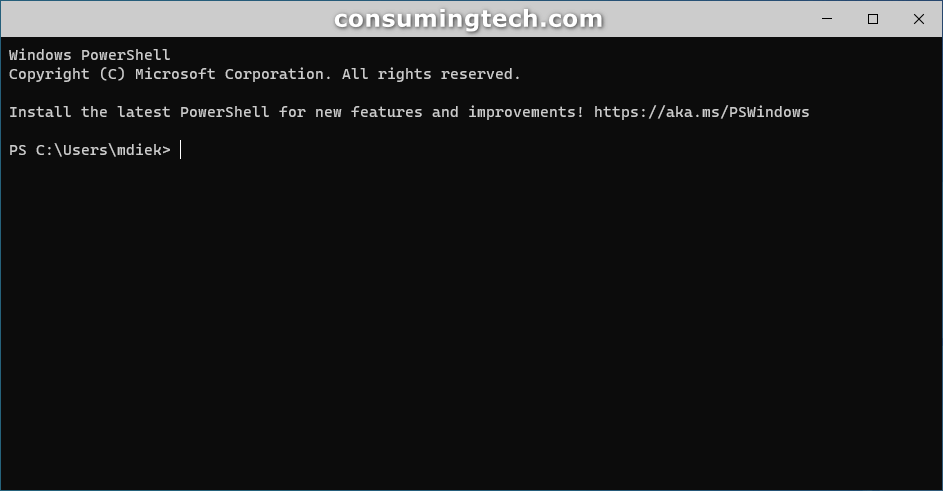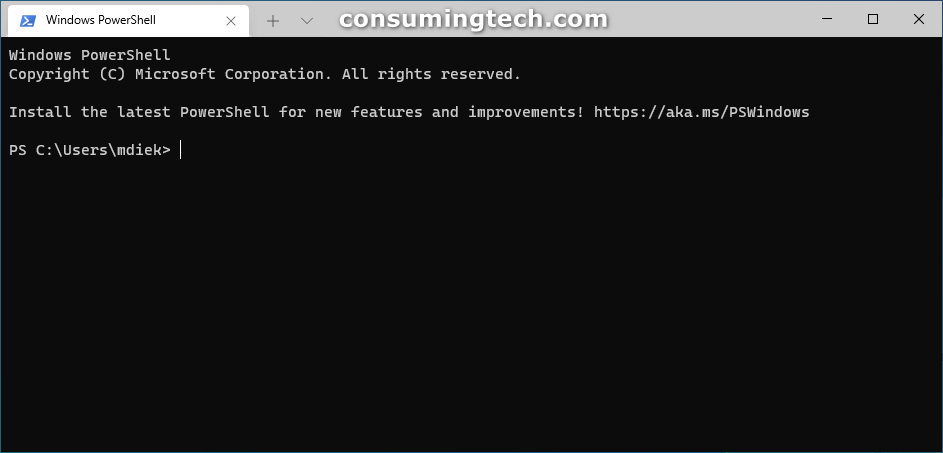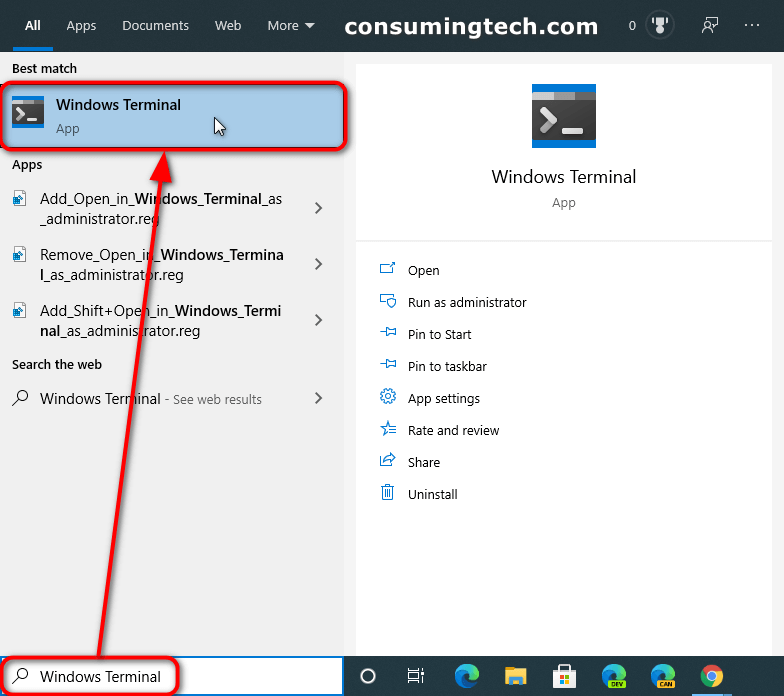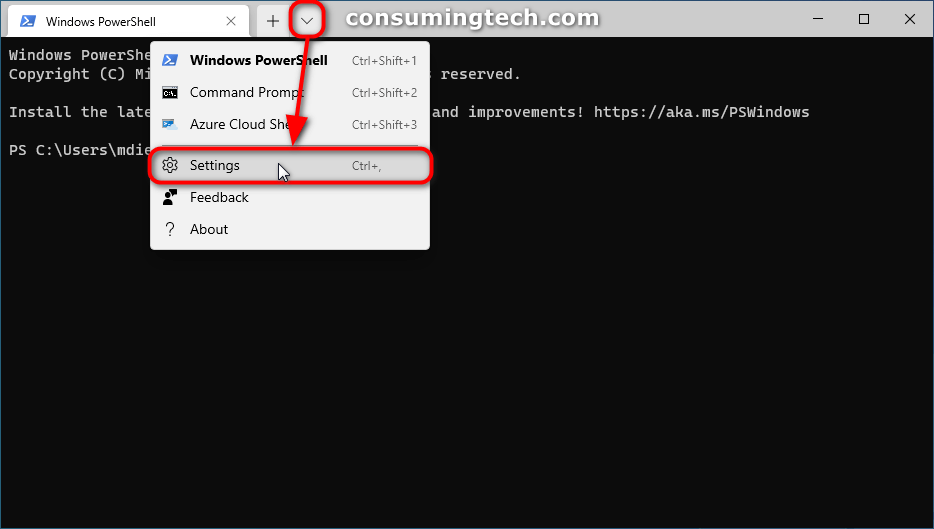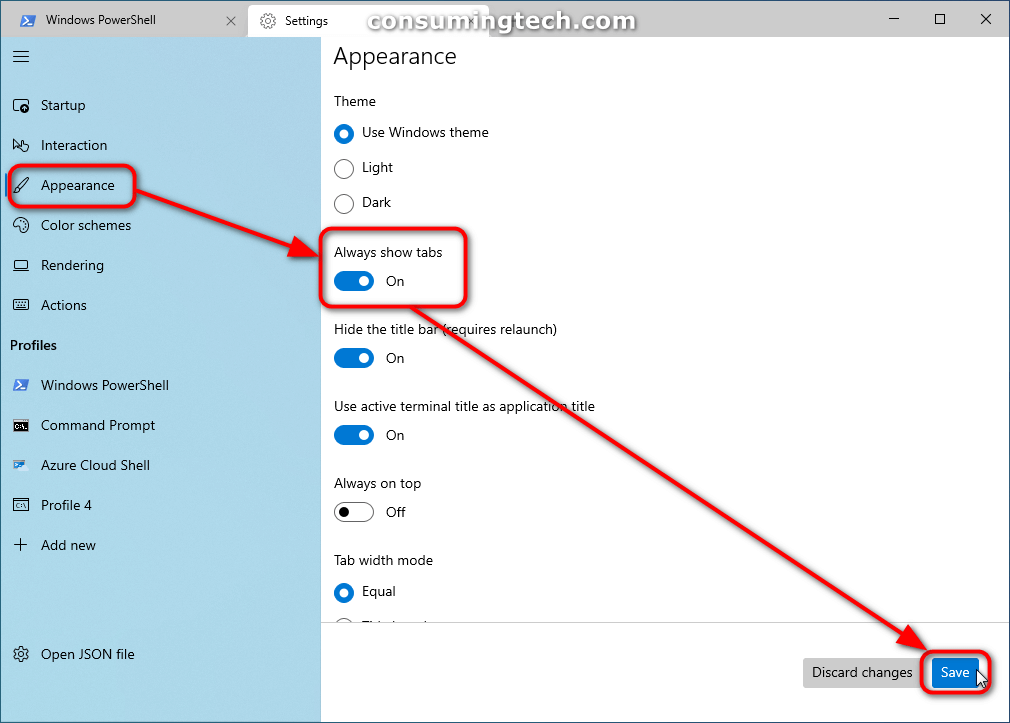Last Updated on December 24, 2022 by Mathew Diekhake
Windows Terminal is Microsoft’s new command-line app. It allows for multiple tabs, and from each tab you also have the option of opening either the Windows PowerShell, Command Prompt, Azure Cloud Shell, or the plain PowerShell. Additionally, it is also preconfigured to run SSH and WSL. Windows Terminal can run any command-line app which includes all Windows terminal emulators.
The Windows Terminal app, otherwise known as the new Windows PowerShell, is the long-awaited app many Windows enthusiasts had been waiting for thanks to its ability to do far more than the typical command line which had become outdated. Interestingly, the Windows Terminal was initially available as a separate app that needed to be downloaded from the Microsoft Store; however, if you were to go to the Microsoft Store to download it now you would be prompted that it is already on your computer. You haven’t got memory issues; as stated above in recent Windows 10 updates you would now find the app on your computer as an Inbox app.
One of the features that comes with Windows Terminal is the option to show or not show tabs. The Windows Terminal app comes with tabs being shown by default, and at the moment there is a good reason for that: if you turn off tabs, you won’t be able to get back into the settings again for now. If you turn the tabs off today you will need to uninstall and then reinstall the Windows Terminal app entirely. However, in the future Microsoft will address that, and then there will be more viable reasons for having tabs off.
An example of ‘Always Show Tabs’ turned off in Windows Terminal app:
An example of ‘Always Show Tabs’ turned on in Windows Terminal app:
The following tutorial demonstrates how to enable and disable “Always Show Tabs” in the Windows Terminal app when using a version of the Windows 10 operating system.
How to Enable/Disable Always Show Tabs in Windows Terminal in Windows 10
You can enable and disable “Always Show Tabs” from the Windows Terminal apps’ settings menu. Here is how to do that:
1. Open the Windows Terminal app. (Click to enlarge the screenshot below.)
2. Next to the tabs, click on the down-facing arrow to bring up the Windows Terminal menu and then click on the Settings link. (Click to enlarge the screenshot below.)
3. Click on Appearance in the left menu.
4. From the right side of the same window, click on the Always show tabs toggle to turn it on or off.
5. After selecting to turn on of off the title bar, click on the Save button at the bottom of the Settings page. (Click to enlarge the screenshot below.)
You can close the Windows Terminal settings and continue using the computer.
In conclusion, that is how to enable and disable “Always Show Tabs” in the Windows Terminal app in Windows 10.
Related Tutorials
- How to Change Microsoft Edge Theme in Windows 10 [Tutorial]
- How to Change Width of Taskbar Buttons in Windows [Tutorial]
- How to Hide/Show Title Bar for Windows Terminal App in Windows 10 [Tutorial]
- How to Add Create Elevated Shortcut to Context Menu in Windows 10 [Tutorial]
- How to Add/Remove ‘Open in Windows Terminal as administrator’ Context Menu [Tutorial]
- How to Change Title Bar Text Size in Windows 10 [Tutorial]
- How to Add/Remove Move to OneDrive Context Menu in Windows 10 [Tutorial]
- How to Use Bing Wallpaper App to Change Windows 10 Desktop Background [Tutorial]

